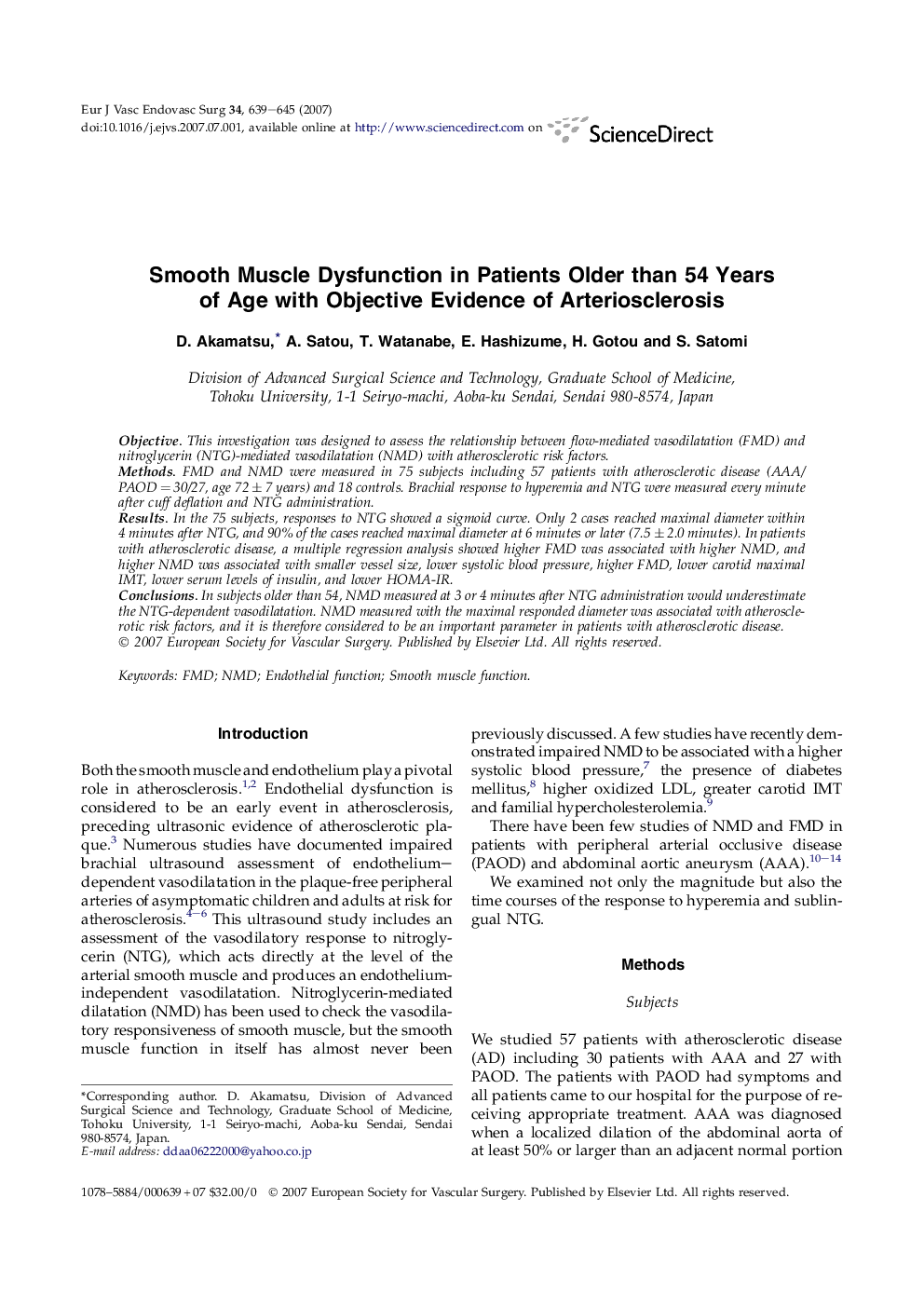| Article ID | Journal | Published Year | Pages | File Type |
|---|---|---|---|---|
| 2915329 | European Journal of Vascular and Endovascular Surgery | 2007 | 7 Pages |
ObjectiveThis investigation was designed to assess the relationship between flow-mediated vasodilatation (FMD) and nitroglycerin (NTG)-mediated vasodilatation (NMD) with atherosclerotic risk factors.MethodsFMD and NMD were measured in 75 subjects including 57 patients with atherosclerotic disease (AAA/PAOD = 30/27, age 72 ± 7 years) and 18 controls. Brachial response to hyperemia and NTG were measured every minute after cuff deflation and NTG administration.ResultsIn the 75 subjects, responses to NTG showed a sigmoid curve. Only 2 cases reached maximal diameter within 4 minutes after NTG, and 90% of the cases reached maximal diameter at 6 minutes or later (7.5 ± 2.0 minutes). In patients with atherosclerotic disease, a multiple regression analysis showed higher FMD was associated with higher NMD, and higher NMD was associated with smaller vessel size, lower systolic blood pressure, higher FMD, lower carotid maximal IMT, lower serum levels of insulin, and lower HOMA-IR.ConclusionsIn subjects older than 54, NMD measured at 3 or 4 minutes after NTG administration would underestimate the NTG-dependent vasodilatation. NMD measured with the maximal responded diameter was associated with atherosclerotic risk factors, and it is therefore considered to be an important parameter in patients with atherosclerotic disease.
